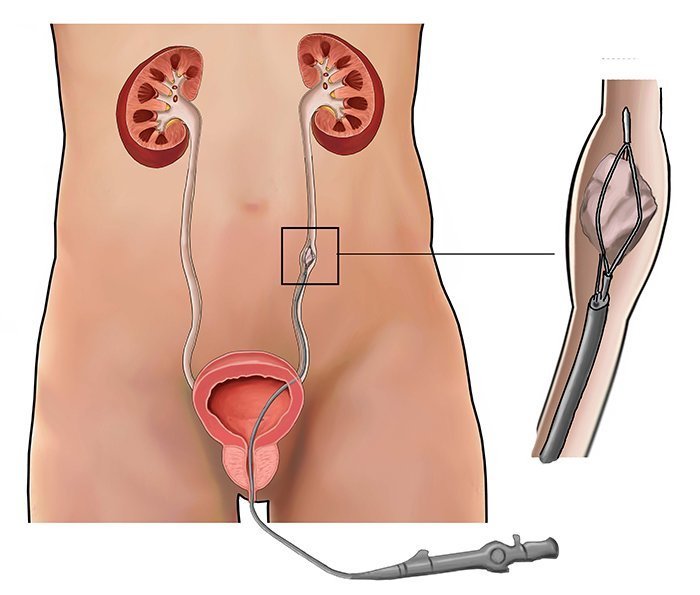
Endoscopic stone surgery, also known as endourologic stone surgery, is a minimally invasive surgical procedure used to treat various types of urinary tract stones, such as kidney stones, ureteral stones, and bladder stones. The primary goal of this procedure is to remove or break down the stones without the need for traditional open surgery. Here’s how the procedure typically works: Preparation: The patient is usually placed under general anesthesia or given local anesthesia, depending on the specific case and the location of the stones. Insertion of the Endoscope: A thin, flexible tube with a camera at its tip, called an endoscope, is inserted through a natural body opening or a small incision. For example, in ureteroscopy, the endoscope is usually passed through the urethra and up into the urinary tract. Stone Identification: The endoscope allows the surgeon to visualize the stones directly on a video monitor. This enables them to precisely locate the stones and assess their size and position. Stone Removal or Fragmentation: There are several techniques to remove or break down the
stones. These can include:
Completion: Once the stones have been removed or fragmented, the endoscope is withdrawn, and any incisions are closed if necessary. Endoscopic stone surgery is favored over traditional open surgery because it is less invasive, involves smaller incisions (or no incisions at all), and typically results in a quicker recovery time for the patient. It is effective for many types and sizes of urinary stones, although the choice of technique may vary based on the stone’s location, size, and composition, as well as the patient’s specific medical condition. The specific procedure used will be determined by the urologist based on these factors.

we provide state-of-the-art urological services at American, and European standards in following discipline of urology
WhatsApp us